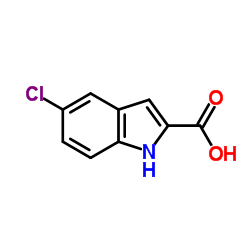| Structure | Name/CAS No. | Articles |
|---|---|---|
 |
5-Chloroindole-2-carboxylic acid
CAS:10517-21-2 |
| Structure | Name/CAS No. | Articles |
|---|---|---|
 |
5-Chloroindole-2-carboxylic acid
CAS:10517-21-2 |